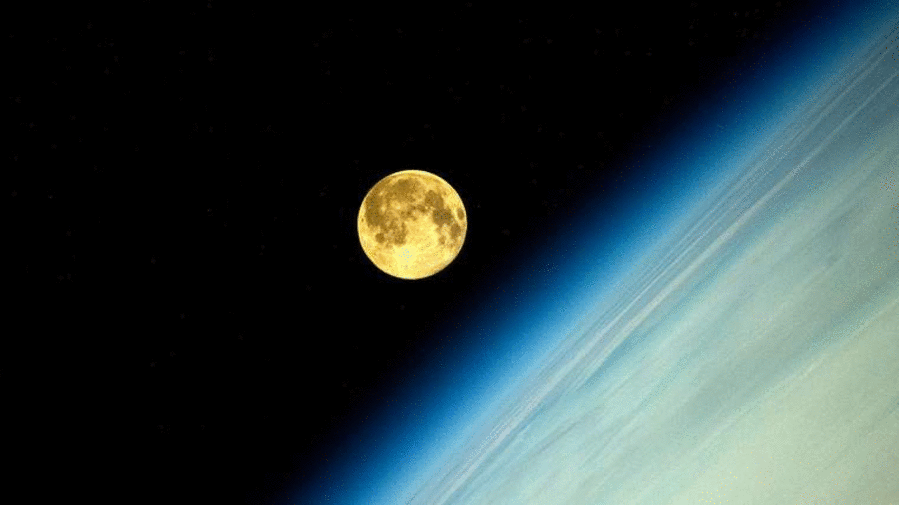Difference between revisions of "August 13, 2014"
| Line 3: | Line 3: | ||
<!-- ws:start:WikiTextHeadingRule:0:<h1> --> | <!-- ws:start:WikiTextHeadingRule:0:<h1> --> | ||
<!-- ws:start:WikiTextLocalImageRule:6:<img src="/file/view/LPOD-Aug13-14.gif/518372740/LPOD-Aug13-14.gif" alt="" title="" /> -->[[File:LPOD-Aug13-14.gif|LPOD-Aug13-14.gif]]<!-- ws:end:WikiTextLocalImageRule:6 --><br /> | <!-- ws:start:WikiTextLocalImageRule:6:<img src="/file/view/LPOD-Aug13-14.gif/518372740/LPOD-Aug13-14.gif" alt="" title="" /> -->[[File:LPOD-Aug13-14.gif|LPOD-Aug13-14.gif]]<!-- ws:end:WikiTextLocalImageRule:6 --><br /> | ||
| − | <em>image by [http://news.sky.com/story/1316230/supermoon-lights-up-sky-in-stunning-space-pics | + | <em>image by [http://news.sky.com/story/1316230/supermoon-lights-up-sky-in-stunning-space-pics Oleg Artemyev / Roscosmos]</em><br /> |
<br /> | <br /> | ||
When I used to help train Space Shuttle astronauts they would commonly say that the two best things about being in space were microgravity and looking out the windows at Earth. Since I taught them about Earth observation and photography, that was nice to hear. (But I did wonder if they told the folks who trained them to use the Shuttle toilet that that was one of the best things....) These moonset images are from International Space Station cosmonaut Oleg Artemyev, who tweeted them down for the Earthbound to enjoy. I wonder when an orbiter observes Ganymede set through the thick atmosphere of Jupiter if the satellite is distorted into a line before it disappears, or if the atmosphere is so thick that Ganymede becomes invisible before then? Did Galileo (the spacecraft) ever acquire such a moonset sequence?<br /> | When I used to help train Space Shuttle astronauts they would commonly say that the two best things about being in space were microgravity and looking out the windows at Earth. Since I taught them about Earth observation and photography, that was nice to hear. (But I did wonder if they told the folks who trained them to use the Shuttle toilet that that was one of the best things....) These moonset images are from International Space Station cosmonaut Oleg Artemyev, who tweeted them down for the Earthbound to enjoy. I wonder when an orbiter observes Ganymede set through the thick atmosphere of Jupiter if the satellite is distorted into a line before it disappears, or if the atmosphere is so thick that Ganymede becomes invisible before then? Did Galileo (the spacecraft) ever acquire such a moonset sequence?<br /> | ||
<br /> | <br /> | ||
| − | <em>[mailto:tychocrater@yahoo.com | + | <em>[mailto:tychocrater@yahoo.com Chuck Wood]</em><br /> |
| − | I animated the original 4 still images using [http://gifmaker.me | + | I animated the original 4 still images using [http://gifmaker.me GifMaker]<br /> |
<hr /> | <hr /> | ||
Revision as of 20:11, 17 January 2015
Squashing the Super Moon

image by Oleg Artemyev / Roscosmos
When I used to help train Space Shuttle astronauts they would commonly say that the two best things about being in space were microgravity and looking out the windows at Earth. Since I taught them about Earth observation and photography, that was nice to hear. (But I did wonder if they told the folks who trained them to use the Shuttle toilet that that was one of the best things....) These moonset images are from International Space Station cosmonaut Oleg Artemyev, who tweeted them down for the Earthbound to enjoy. I wonder when an orbiter observes Ganymede set through the thick atmosphere of Jupiter if the satellite is distorted into a line before it disappears, or if the atmosphere is so thick that Ganymede becomes invisible before then? Did Galileo (the spacecraft) ever acquire such a moonset sequence?
Chuck Wood
I animated the original 4 still images using GifMaker



